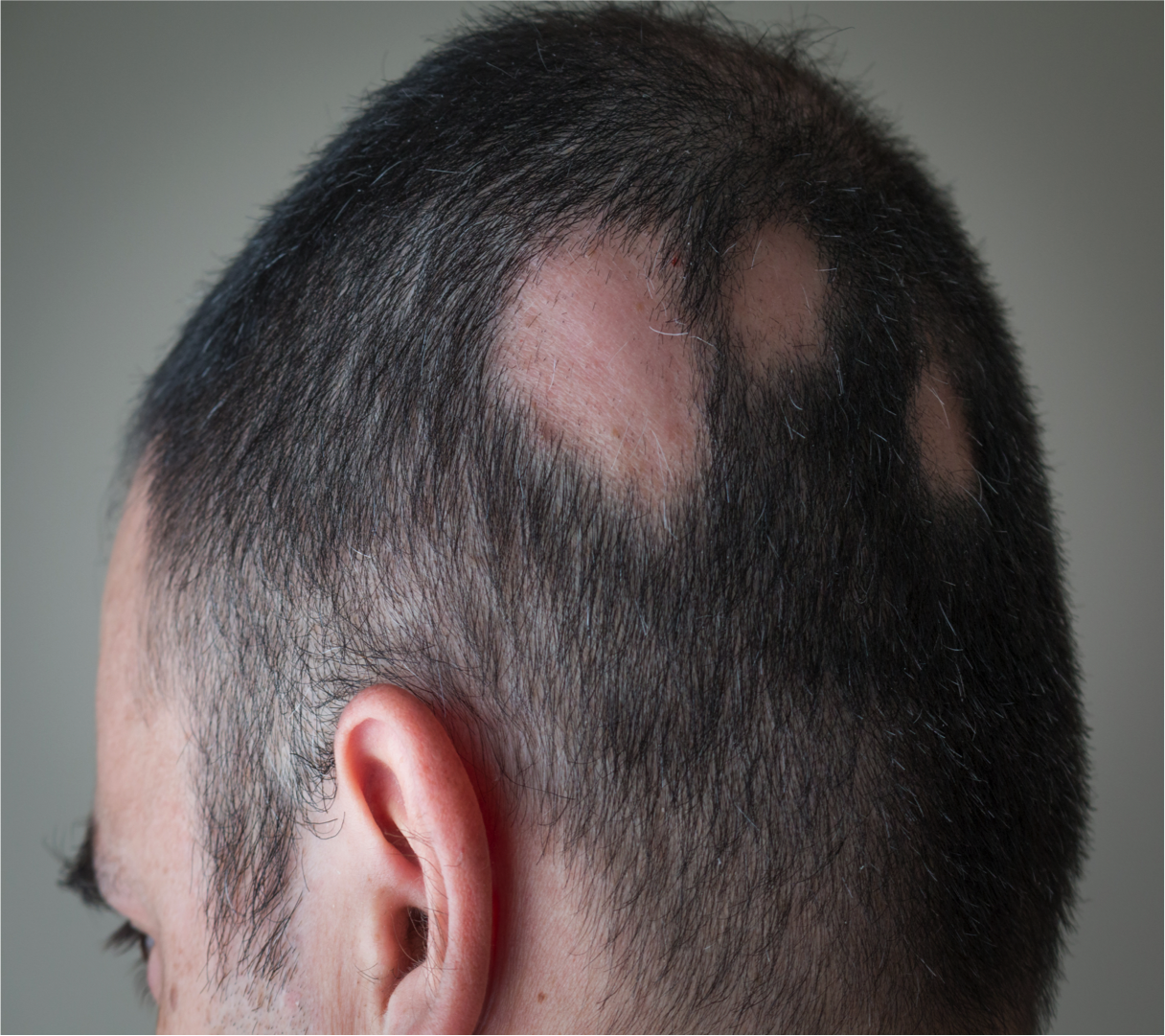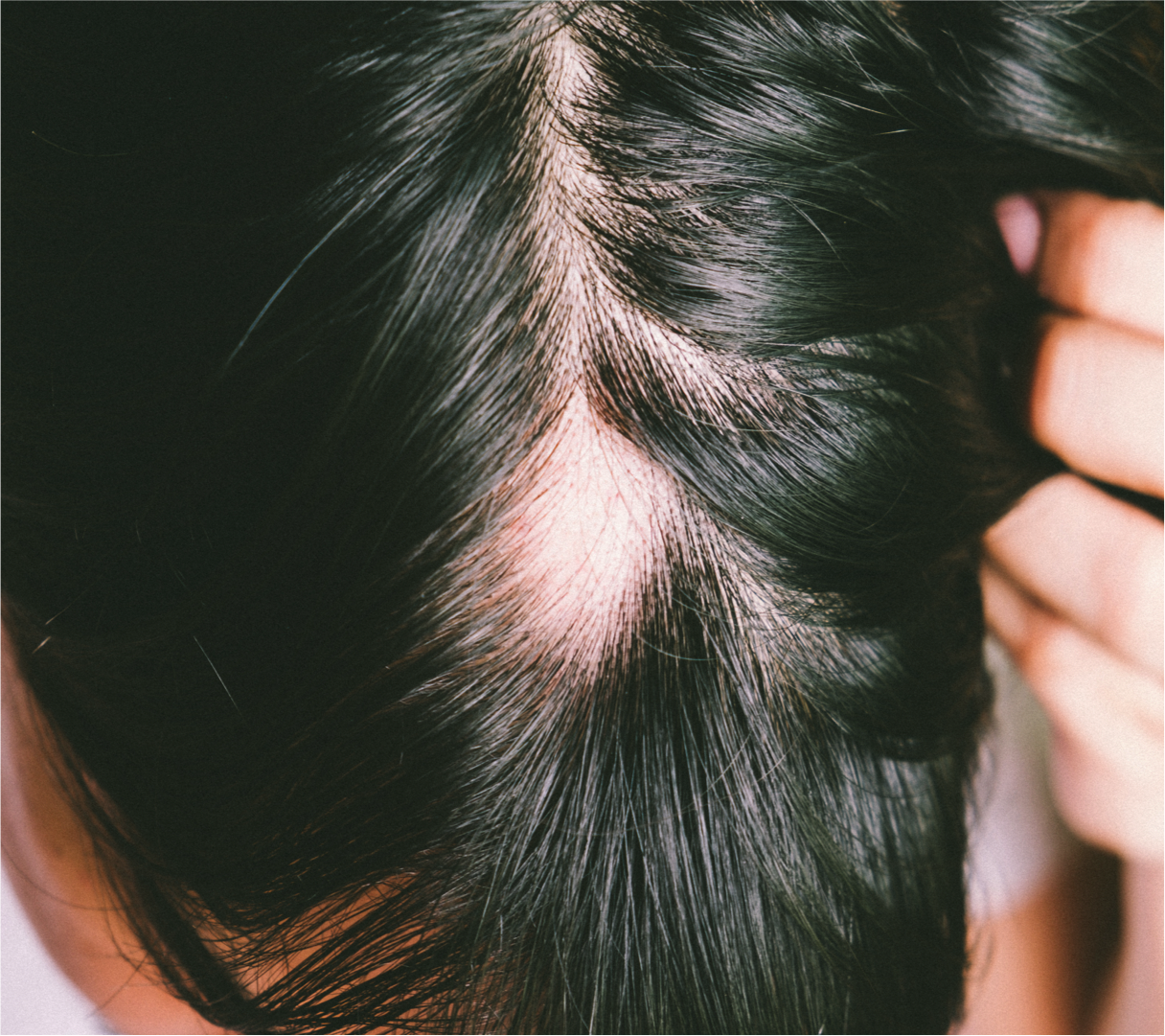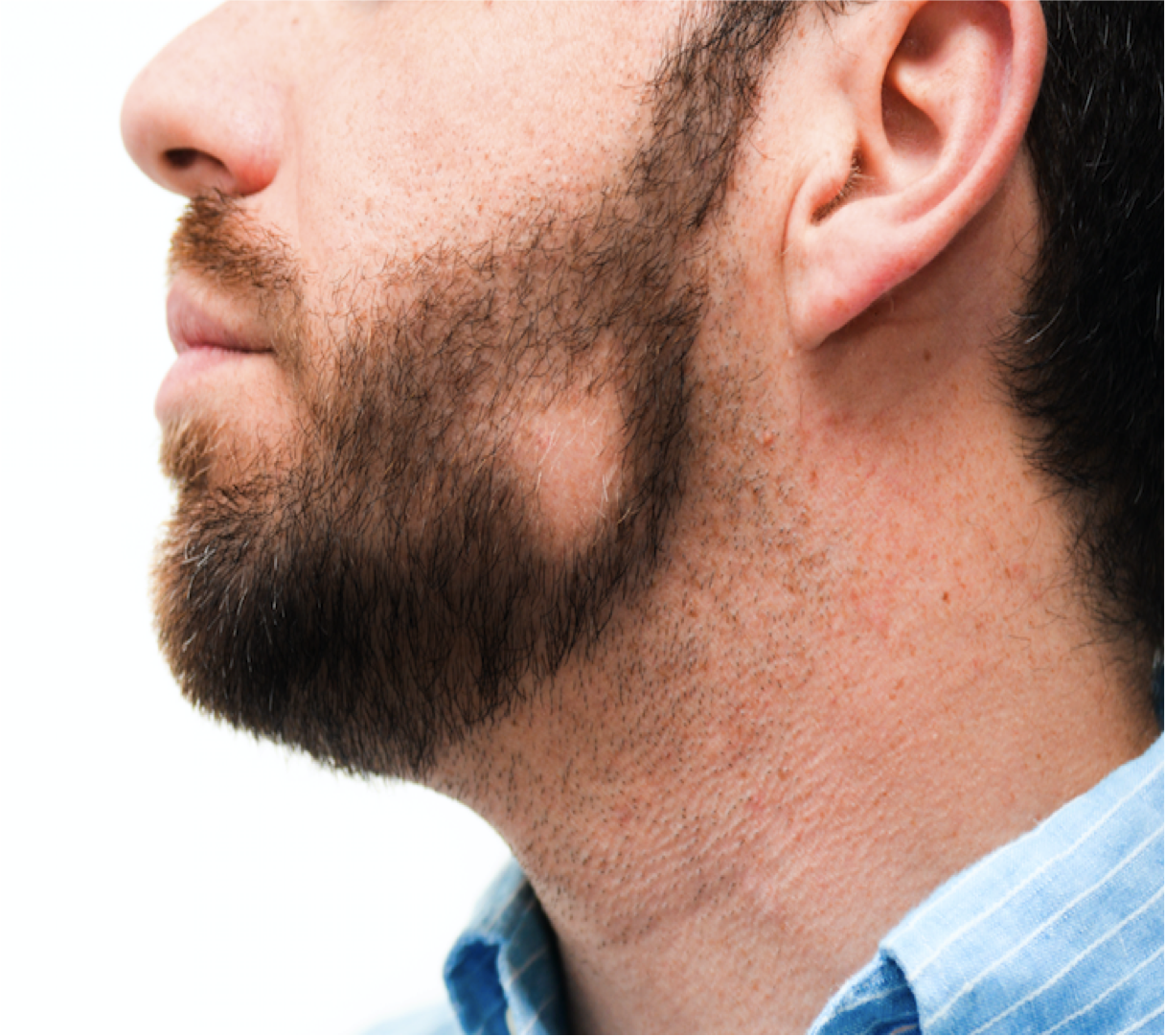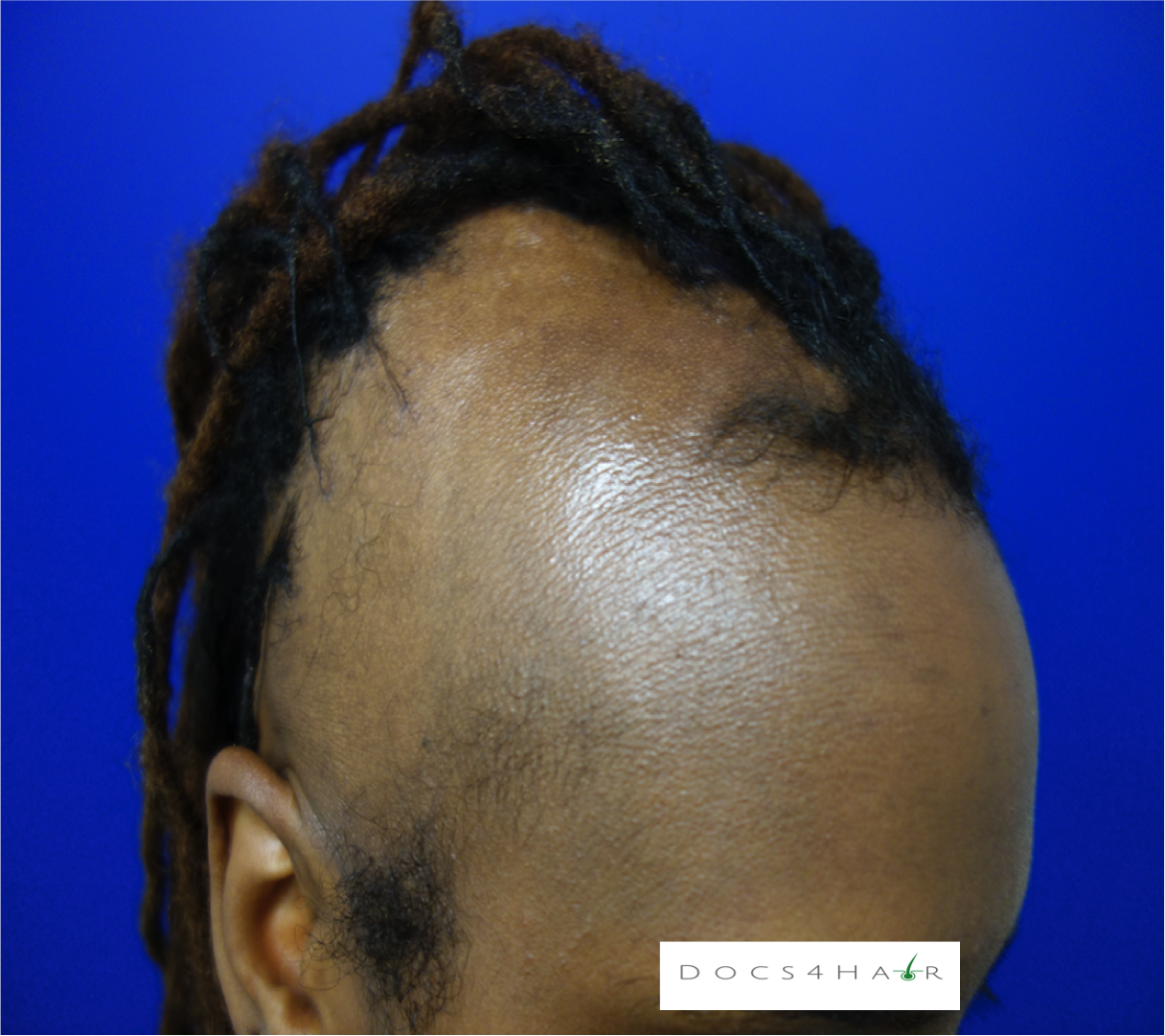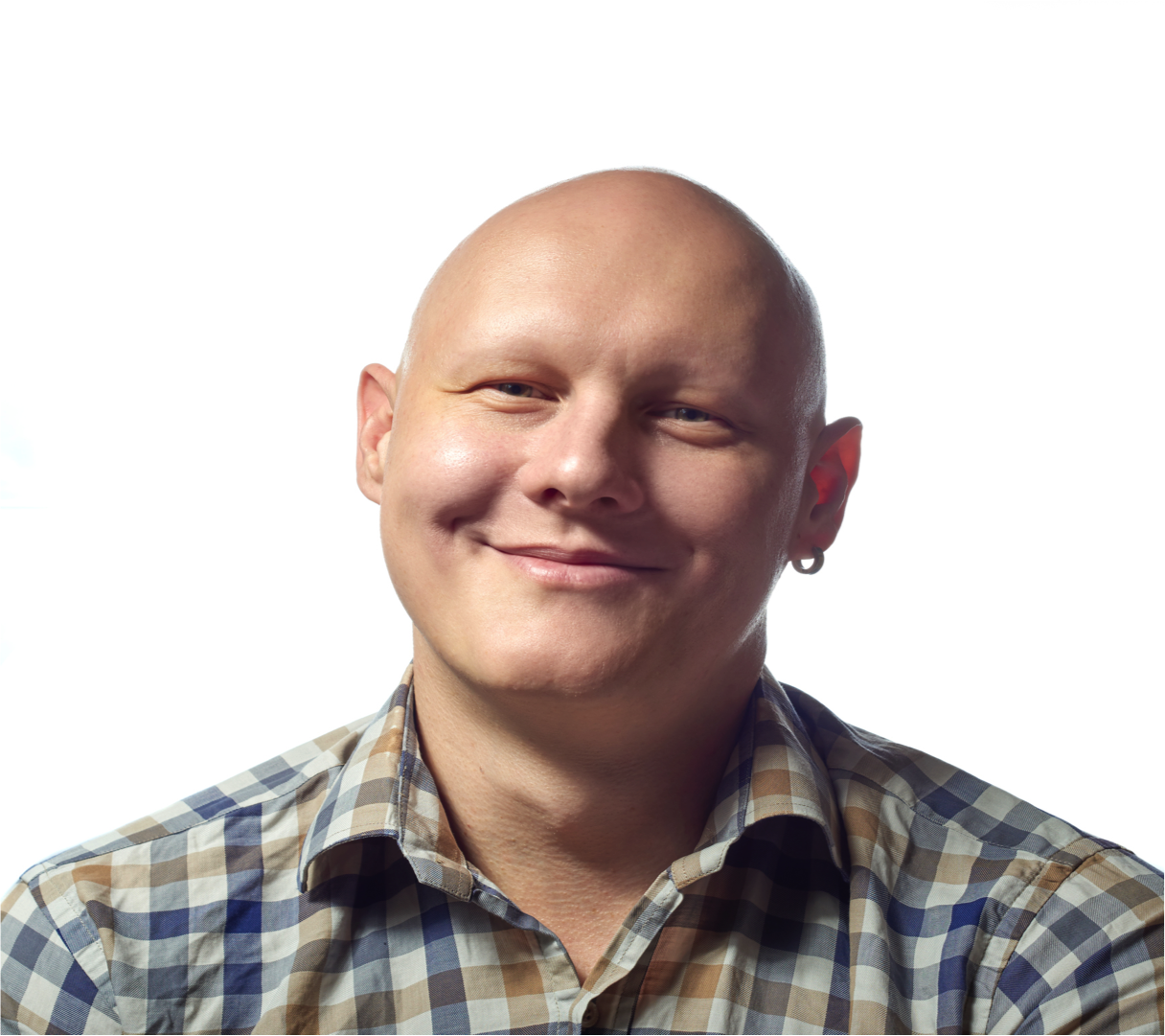Alopecia Areata
Clinical Presentation (1, 2)
Alopecia areata (AA) is a chronic relapsing non-scarring alopecia that affects the hair follicles. It can present with acute onset of (1, 2):
Alopecia areata: Single or multiple smooth, sharply demarcated, round patches of hair loss with “exclamation point” hairs at the periphery
Ophiasis: Band-like hair loss on the temporal and occipital scalp
Alopecia areata incognito: Widespread shedding and thinning of hair across the scalp. More favorable prognosis for regrowth
Alopecia totalis: Total hair loss of the scalp
Alopecia univeralis: Total hair loss of scalp and body
Marie Antoinette and Thomas More Syndrome: Sudden whitening of hair caused by an acute episode of diffuse AA due to the preferential loss of pigmented hairs.
Epidemiology
The worldwide incidence of AA is estimated to be 2% (3, 4). It can affect men, women, and children of any race. Blacks and Hispanics demonstrated almost 3-fold and 2-fold increase odds of having AA compared to Whites (18)
Causes (2, 5)
The exact cause of AA is unknown. AA is considered to be an autoimmune condition resulting from the loss of hair follicle immune privilege. It has also been associated with possible genetic predisposition.
Diagnosis (1, 2)
Alopecia areata is diagnosed via careful history, clinical scalp/ hair exam, and dermoscopic evaluation. Scalp biopsies may be performed to help confirm the diagnosis.
Clinical Imitators (Differential Diagnosis)(1, 2)
Temporal triangular alopecia, androgenic alopecia, trichotillomania, tinea capitis, secondary syphilis, pressure-related alopecia, aplasia cutis, chemotherapy-induced alopecia, and telogen effluvium
Associated Conditions (2, 6)
Systemic: Atopic diseases, lupus, anemia, thyroid disease, anxiety/ depression, celiac disease (weak evidence for routine testing- testing if there are signs, symptoms and risk factors) (7), nutritional (low iron/ ferritin, zinc, vitamin D)
Skin: Vitiligo, psoriasis
Nails (negative impact on prognosis): nail pitting, trachyonychia (sandpaper appearance of nails)
Treatment OPtions (1, 2)
In most cases, AA is a self-limiting disease with up to 50% of cases resolving spontaneously within twelve months (8). In those with persistent hair loss, treatment can be challenging with less than 20% obtaining complete long-term hair regrowth (9). Treatment (single or combination) depends on the age, stage/ extent of disease and other associated conditions.
Anti-Inflammatory: Steroids (oral, intravenous, intramuscular, topical, local injection), oral immunosuppressives (methotrexate (9), cyclosporine), topical calcineurin inhibitors (tacrolimus and pimecrolimus)
Immunotherapy/ Contact Irritant: Squaric acid dibutylester, diphencyclopropenone, anthralin
Growth stimulants: Minoxidil (anagen phase promoter- topical/ oral). Of note, autoimmune inflammation should be managed for growth stimulators to function properly.
Phototherapy: Excimer laser
Scalp camouflage: Scalp micro-pigmentation, hair fibers, color stick, and scalp prosthesis (10).
Vitamins: Oral zinc gluconate (11)
Evolving: Janus kinase inhibitors (Tofacitinib/ Ruxolitinib) oral and topical (12, 13, 14), Platelet rich plasma (15, 16)
Essential oils: Thyme, Lavender, Rosemary, and Cedarwood (17)

